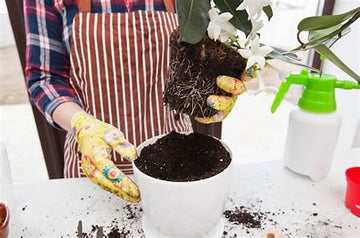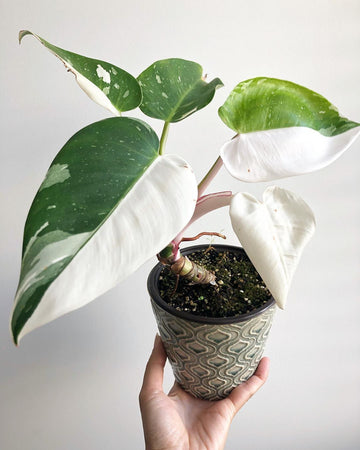Houseplants and outdoor container plantings need to be repotted from time to time to keep their roots and shoots growing healthy. Potting soil tends to compact over time, resulting in smaller pore spaces for holding water and air that roots need to thrive. And compacted soils do not drain as well. Young houseplants and outdoor container gardens can also quickly outgrow their planters, another reason to repot your plants. If you watch plants carefully, you’ll notice several signs indicating a plant has outgrown its container. These signals along with seasonal growth habits will help you determine the best time to repot plants.
Best Time Of Year To Repot Plants
Spring is the best time to repot both indoor and outdoor container plants. Spring potting prepares plants for the approaching growing season. Plants put on the bulk of their root and shoot growth during the spring and summer months. Repotting in spring provides plants with the space they need
for healthy root development, which in turn supports shoot, foliage, and flower growth. Spring planting also allows plants time to settle into their new containers before the heat of summer sets in. It is a good idea to repot outdoor plants in the morning or evening when temperatures are cooler.
How Often Do Plants Need Repotting
Young plants grow vigorously and tend to outgrow containers every six to twelve months. After the first year of growth, few houseplants will need to be repotted more than once per year. Outdoor container plantings also need to be repotted once per year to freshen soils and provide room for an expanding root system. As plants age, their growth slows down. Older houseplants benefit from repotting every three to five years to replenish soil and stimulate new growth.
Some plants may need to be repotted even if they have not outgrown their container. Bonsai trees and other slow-growing houseplants benefit from repotting to loosen and freshen the soil. You can repot these plants in the same container with fresh soil.
Cues Indicating A Plant Needs To Be Repotted
If you pay attention, plants usually let you know when they are outgrowing their containers. You might notice roots circling the edges of pots, matting along the surface of the soil, or growing out drainage holes in the bottom of the container—sure signs the plant is roo-bound. Plants may dry out more quickly than usual between watering, or you might notice that plant growth has slowed considerably.
When soil is compacted or overcrowded by roots, it cannot hold adequate moisture for the roots to absorb. Plants may show signs of water stress similar to those of underwatering, such as wilting or drooping leaves, brittle leaf tips, or yellowing foliage near the top of the plant.
Sometimes plants grow too top heavy for their container and start to fall over easily. Look at the proportion of top growth compared to the container size. When the volume of foliage reaches three times that of the container, it’s time to repot the plant into a larger container.
Tips For Repotting Your Plant
For most plants, you will want to increase the size of the container when repotting to accommodate plant growth. Choose a container one size larger than the current pot or one to two inches wider. Use fresh, high-quality potting soil when repotting and mix in a slow-release fertilizer if the potting soil does not contain one. Use potting soil in outdoor containers as well, not topsoil or other outdoor soil mixes which are too heavy for containers.
Gently loosen the roots when repotting plants. If roots are circling the container, twisted together, or densely packed, they will benefit from trimming. Plants with circling roots can eventually girdle themselves, essentially cutting off the flow of water and nutrients. To prevent this, work circling roots loose with your fingers to straighten them out. Don’t worry if some of the roots break. If they are wound too tight, cut through them with a sharp knife or pruning shears.
Sometimes plants are so root-bound that they slide out of their pots as one dense cylinder. These need to be worked loose to reestablish contact between the soil and roots. Start by cutting off as much as one-third of the roots from the bottom of the root ball. This may be enough to allow you
to work your fingers into the remaining root mass to untangle it. For severely compacted roots, you may need to make a few additional vertical cuts into the root mass to open it up.
Some gardeners and houseplant parents prune plant roots to keep plants on the smaller size. If you do not wish to move your plant to a larger container and are happy with its current size, you can cut back the outer layer of roots. Trim them enough so that the plant fits back into its container with room to fill in soil around the roots. It is a good idea to trim back some of the plant’s top growth to balance the root to shoot ratio. Repotted plants may take some time to recover from the move but will soon respond with renewed vigor.




